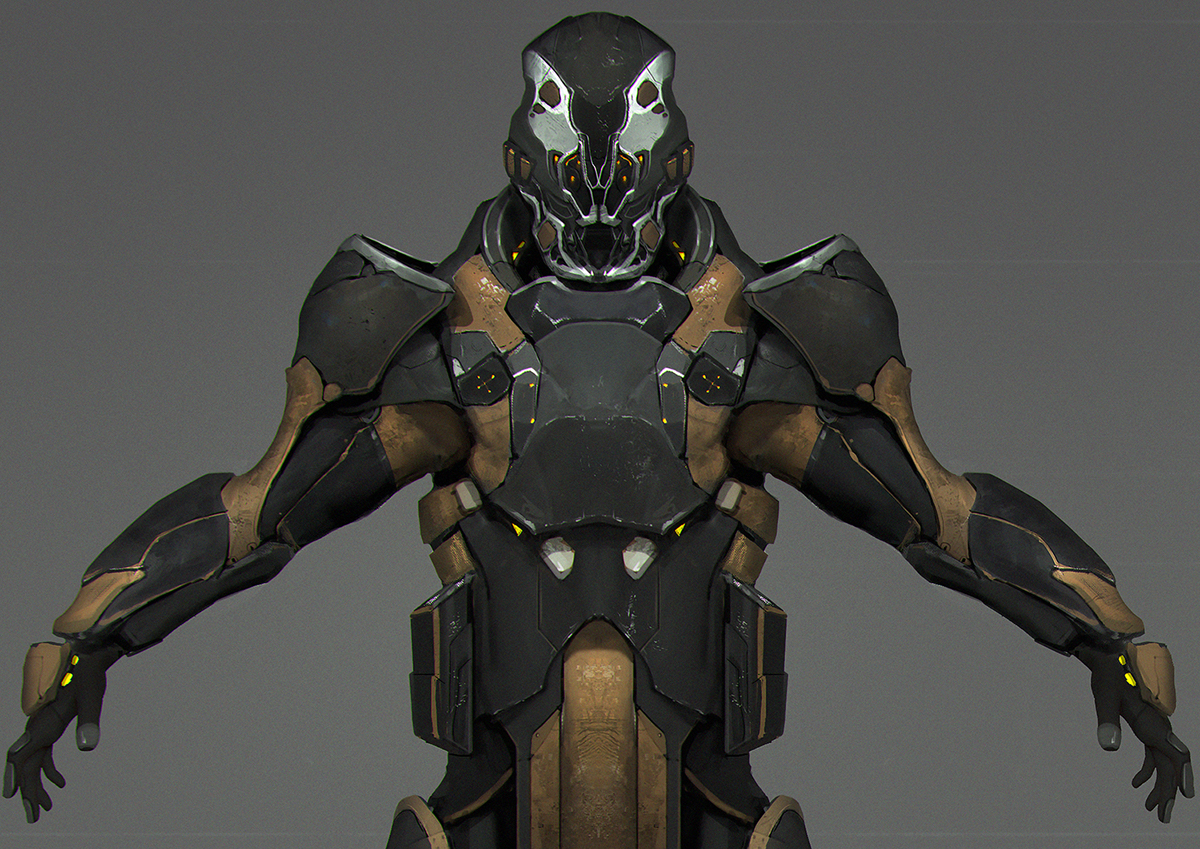Twitch: Loadout is a personal passion project, designed as a case study to further develop our skills and understanding of concept art, modeling, animation, music and sound.
Credits:
Direction/Animation – Sava Zivkovic
Character Design – Milan Nikolic
Modeling/Texturing – Sava Zivkovic
Music/Sound Design – Iz Svemira
Motion Capture – Take One
Additional Character Animation – Take One
Behind The Scenes Coverage – Milos Nikolic
Tools: 3ds Max, Octane Render, Quixel Suite, Adobe Suite, premade models from Evermotion and Video Copilot
Concept
When we first talked about starting on this project the main goal was not focusing on the animation itself, but instead on the modeling process. Having worked for years in ArchVIZ and Motion Graphics industries I’ve quickly developed an appetite for more complex hard surface modeling than what these industries usually entail. But also, given my passion for animation, it was quite apparent that this project wasn’t going to end simply by just modeling the character and outputting a couple of renders.
The concept therefore evolved, and we’ve eventually settled on producing a full-fledged title sequence for Milan’s Twitch Stream. The sequence itself depicts the soldier character, designed by Milan, getting ready for impending combat. Being that the subject of Milan’s Twitch Stream is concept art, we decided to focus on the intricate details of the character itself, showing the design and form language before revealing the whole character.
To further develop the concept, we’ve created two scenes, or worlds if you will. The main interior scene, where we see the details of the design, and the battle scene where we get a glimpse of our character in action. The purpose of the two scenes is to provide visual contrast, blue grading of the interior vs. the orange grading for the action scene, clean look and steady camera of the interior vs. the grainy handheld and chaotic look of the action scene.
Process
Character Design
My friend Milan Nikolic developed the concept for the character, resulting in this functionally designed Special Forces Heavy Troop, capable of operating on his own far beyond enemy lines. As one of Milan’s trademarks, the design features more organic forms, as seen particularly in the helmet details. The final concept shows a battle hardened soldier with visual marks from former battles, something that is reflected in the final model itself. The design suffered through a number of iterations before we’ve finally settled on the finished concept, as depicted below.



Modeling
As opposed to Milan’s task of designing the main character, something he does on his day to day work, my task of modeling the character was completely uncharted water for me. The model was created in 3ds Max, with the standard technique of setting up front back and side views of the concept and modeling away, a very time consuming process if you have no former experience as I found out.

Towards the end of the modeling phase Milan got quite good at using ZBrush for concept art, so we experimented with re-topology techniques. He revisited the backpack design and made a rough model in ZBrush which I then retopologized and detailed up in 3ds Max. We found that this is an immensely time saving technique, and is something that we look forward to experimenting with in future.

Texturing
The texturing on this project was another huge learning experience. Having always textured my models directly in Max, I wanted to try a different approach and experimented with Quixel Suite and Substance Painter. Both are amazing in their own right and you can achieve the same result, but as always it goes down to personal preference, and for me the choice was Quixel due to the familiar interface of Photoshop, and the material/brush/mask preset library it contains gives it a slight edge over Substance.

Asset Creation Process

Final Asset

Motion Capture/Animation
One of the biggest limitations on this project was the animation itself since I’m no character animator, so I knew we were going to have to work around it somehow. The initial idea was to animate the individual movements in slow motion and use close up framing and lighting to hide the imperfections. Luckily somewhere along the way we got in touch with Take One, one of the biggest motion capture studios in the region, and they were very happy to let us use their facilities and bring the whole piece to life.
Working with MoCap also opened up a whole new world of possibilities, where we were no longer constrained by the simple moves our character needed to make. But keeping the original release date in mind we didn’t want to stray far from the original concept, so the solution was to add the additional action scene which would provide for some more complex moves, and also introduce some visual contrast to the whole piece.

Score
One of the main driving forces behind the whole project was working with my friend Iz Svemira, and refining our workflow between animation and music. We both drew inspiration from more recent Sci-Fi films like Tron: Legacy but also from composers like Cliff Martinez and Trent Reznor.
Having said that, I didn’t want to give any constraints or specific directions for the score since our tastes in music align pretty well, but more importantly I wanted the visuals themselves to drive the decisions that Iz made and, besides his own musical knowledge, be the only roadmap for music creation.

Stills










The project won CGRecord | RebusFarm Reel of the Month award
80 Level Interview
3D Concept Art Interview
Links



